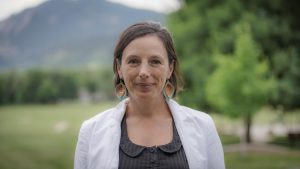
Carbon credits were designed as a market mechanism to incentivize projects that sequester carbon and reduce carbon emissions. The idea is to pay people who are doing climate friendly projects, and sell credits to carbon emitters. But do they work? Is there independent verification that carbon is really being sequestered? What does it mean when people are being paid for projects they would have been doing anyway? And who’s really profiting? Ecosystem scientist Jane Zelikova, director of the Soil Carbon Solutions Center at Colorado State University, guides us through these questions and more.
Sky photo by Matthias Heyde on Unsplash
TIMELINE
2’30 what are carbon credits?
4’49 example of carbon offsets, e.g. the airline industry
5’54 examples of carbon offsets on the ground
7’52 voluntary vs. involuntary/regulatory carbon markets
10’50 who’s getting rich, are the people doing the actual work getting their share
11’55 measurement and verification
13’18 producers don’t always get a significant share, and it’s all dependent on sequestration rates
15’44 does the money from carbon credits help farmer do things that they wouldn’t otherwise do, or paying them to do things that they’re already doing
19’15 how to certify and verify that the projects are real
21’58 there’s no agency that oversees carbon credit markets
23’29 no incentives for truth-telling, no checks and balances; the system is based on trust and wanting to do good
25’26 what is the “conundrum”?
27’18 Jane’s own opinion on carbon credits
29’22 are there enough offsets on the planet to bring the system back into balance?
30’06 even if we stopped all carbon emissions we’d still have to absorb a great deal of legacy carbon
31’17 the role that regenerative agriculture can play
32’18 what is the role of the Soil Carbon Solutions Center in all this



Subscribe:
Apple Podcasts
Spotify